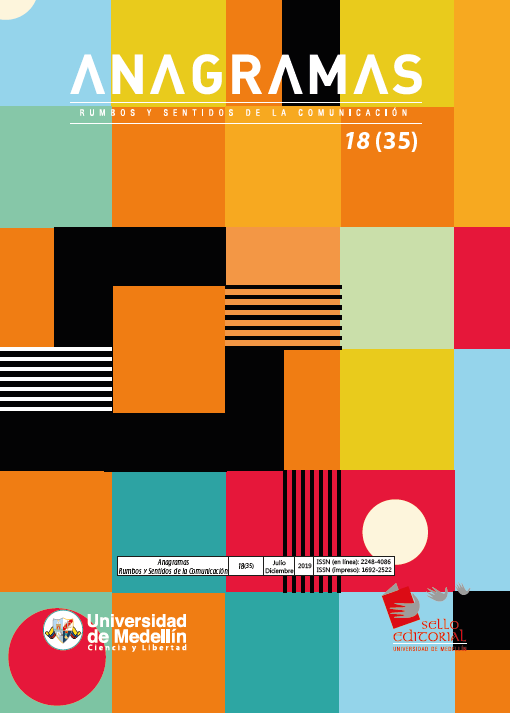The Mediating function of College Radio Programming in the City of Monterrey, Nuevo León
Main Article Content
Abstract
understanding of the university’s identity development.
Article Details
References
Alcoceba, J. (1999). La producción comunicativa de la referencia: un análisis mediacional de las noticias del teletexto en España (tesis doctoral). Universidad Complutense de Madrid.
Arias, M.A. (1982).Una aplicación del modelo dialéctico el proceso de mediación estructural en la prensa escrita. REIS: Revista Española de Investigaciones Sociológica, (33), 175-186.
Camacho, L. (2004) Una historia hecha de sonidos, radio educación, la innovación del cuadrante. Colección Innovación y Calidad, Secretaría de Educación Pública.
Escorcia, O. (2010). Manual para la investigación. Guía para la formulación, desarrollo y divulgación de proyectos. Universidad Nacional de Colombia.
Giner, S. (1967). Historia del pensamiento social. Editorial Ariel.Glaser, B., y Strauss, A. (1967). The Discovery of Grounded Theory. Aldine Press.
Gómez-Escalonilla, G. (1998). La programación televisiva en España. Estudio de las parrillas de programación televisiva española desde 1956 a 1996 (tesis doctoral). Universidad Complutense de Madrid.
Hernández, R., Fernández, C., y Baptista, P. (2002).Metodología de la investigación. McGraw-Hill.
Hinojosa, L. (2012). Educación, ciencia y cultura: Miradas introspectivas a las comunidades universitarias en México. Editorial Comunicación Social.
Lozano, J. (2007). Teoría e investigación de la comunicación de masas. Pearson Educación.
Martí, J. (2000). De la idea a l’antena. Tècniques de programació radiofónica. Editorial Pòrtic.
Martín Serrano, M. (2009). La producción social de la comunicación. Editorial Alianza.
Martín Serrano, M., Piñuel, J. Gracia, J., y Arias, M. (1982). Teoría de la Comunicación, 1.ª epistemología y análisis de referencia. Editorial Universidad Complutense de Madrid.
Moreno, E. (2005). Las radios y sus modelos de programación radiofónica. Comunicación y Sociedad, 53(1), 80-105.
Piñuel Raigada, J. (1990). Cultura y comunicación política en la transición en Chile. Editorial Cedeal.Ross, E. A. (1901). Social Control: A Survey of the Foundations of Order. Macmillan Co.
Toussaint, F. (1991). La radiodifusión universitaria nacional: 50 años de persistencia. En M. Rebeil, Perfiles del cuadrante. Experiencias de la radio (pp. 81-82). Trillas.
Ventín Pereira, J. (2003). Programación radiofónica: una propuesta teórica. Editorial Fragua.





